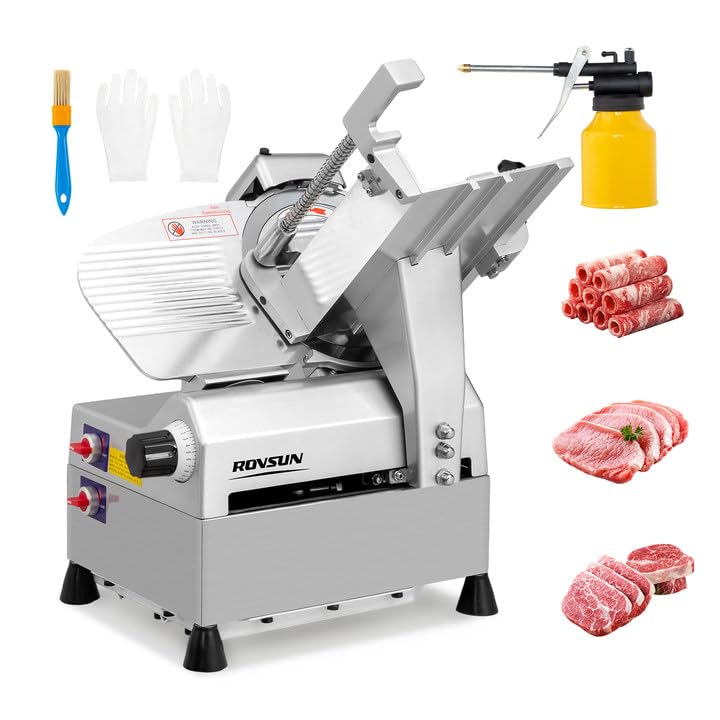Selecting the right commercial meat slicer is crucial for delis, butcher shops, restaurants, and catering businesses. The ideal slicer improves efficiency, ensures consistent cuts, and enhances food safety. This guide covers key factors to consider, types of slicers, and top recommendations.
一. Types of Commercial Meat Slicers
A. Manual (Non-Electric) Slicers
Best for: Low-volume operations, budget-conscious buyers
How they work: Hand-crank operation with adjustable blade thickness
Pros: Affordable, easy to clean, no electricity needed
Cons: Slower, requires more effort
Ideal for: Small delis, food trucks, occasional use
B. Electric Meat Slicers
Best for: High-volume kitchens, delis, and supermarkets
How they work: Motor-powered blade with adjustable speed and thickness
Pros: Faster, more precise cuts, less manual effort
Cons: Higher cost, requires maintenance
Ideal for: Restaurants, butcher shops, sandwich chains
C. Gravity Feed Slicers
Best for: Heavy-duty slicing (large roasts, cured meats)
How they work: Uses weight to push meat against the blade
Pros: Handles thick cuts effortlessly, consistent results
Cons: Bulkier, higher price
Ideal for: Commercial charcuterie, wholesale meat processing
二. Key Features to Consider
A. Blade Size & Material
8–10 inches: Light-duty (sandwich meats, cheese)
12–14 inches: Medium-duty (roasts, ham, turkey)
14+ inches: Heavy-duty (whole briskets, large cured meats)
Blade types:
Stainless steel (rust-resistant, durable)
Carbon steel (sharper but requires more maintenance)
B. Motor Power
1/4 – 1/2 HP: Light slicing (deli meats, cheese)
3/4 – 1 HP: Medium-duty (roasts, frozen meats)
1.5+ HP: Heavy-duty (continuous commercial use)
C. Thickness Adjustment
Look for precise dials (0–15 mm range)
Auto-adjust models available for high-volume slicing
D. Safety Features
Hand guards & blade covers (prevents accidents)
Non-slip feet (stable operation)
Auto-shutoff (overheating protection)
E. Ease of Cleaning
Removable parts (blade, tray, carriage)
Dishwasher-safe components (saves time)

